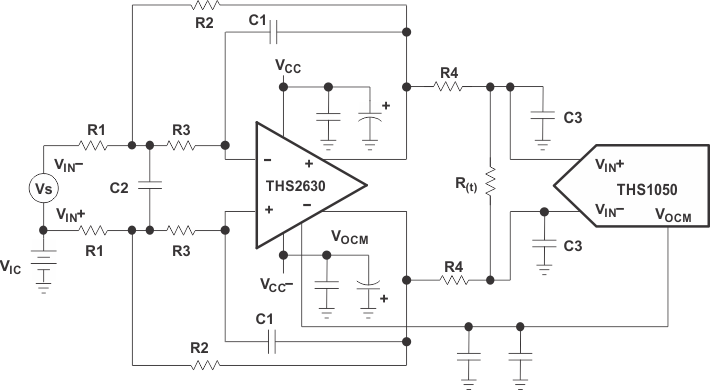ZHCSQB3A january 2023 – july 2023 THS2630
PRODUCTION DATA
- 1
- 1 特性
- 2 应用
- 3 说明
- 4 Revision History
- 5 Pin Configuration and Functions
- 6 Specifications
- 7 Detailed Description
- 8 Application and Implementation
- 9 Device and Documentation Support
- 10Mechanical, Packaging, and Orderable Information
封装选项
机械数据 (封装 | 引脚)
散热焊盘机械数据 (封装 | 引脚)
- DGN|8
订购信息
8.2 Typical Application
For signal conditioning in ADC applications, it is important to limit the input frequency to the ADC. Low-pass filters can prevent the aliasing of the high-frequency noise with the frequency of operation. Figure 8-5 shows a method by which the noise may be filtered in the THS2630.
Figure 8-5 shows a typical application design example for the THS2630 device in active low-pass filter topology driving and ADC.
 Figure 8-5 Antialias Filtering
Figure 8-5 Antialias Filtering